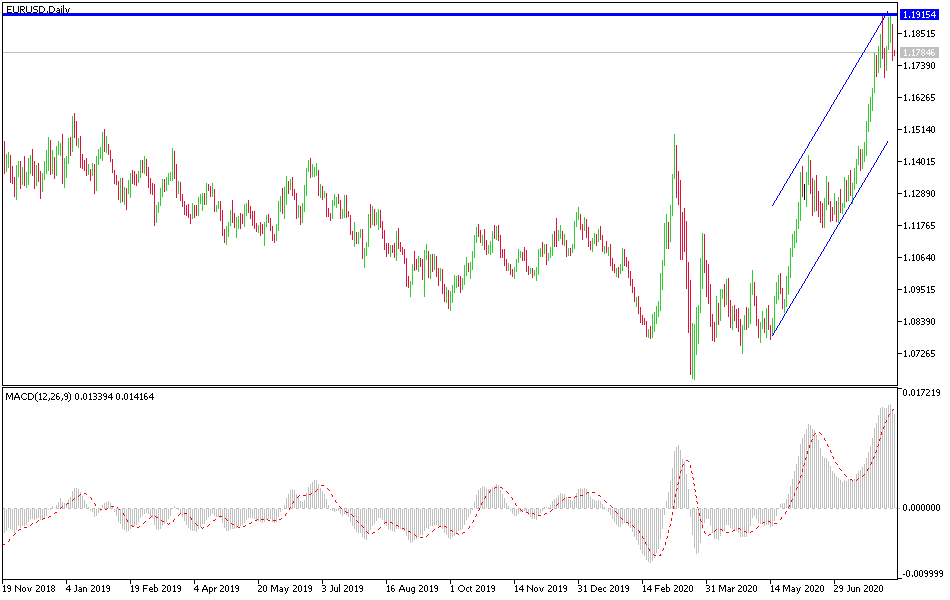The weekly EUR/USD performance was distinguished, as it continued to correct upwards, and its gains reached the 1.1916 resistance. This was the highest level in 26 months, but during last Friday's session and after the announcement of better results than expected for the US jobs numbers for the month of July, the US dollar found the best correction opportunity due to selling that pushed the pair towards the 1.1755 support before closing trading around 1.1785. Analysts also attributed the decline to increased geopolitical tensions, risk aversion and profit-taking ahead of the weekend, although losses may increase this week and volatility may increase after the recent collapse in the Turkish lira.
The single European currency was declining along with other major currencies while the dollar index was rising from its lowest level in two years. Before the weekend, the White House announced a ban on some Chinese technology companies, which may weaken risk appetite. China threatened to retaliate against the White House before the escalation of tensions in the European session, as the US Treasury Department imposed sanctions on 12 Chinese officials, including Hong Kong Chief Executive Carrie Lam, citing the so-called National Security Act that strengthens Beijing's presence and control. This will come at the expense of the freedoms and choices of Hong Kong residents.
Tensions between the United States and China ignited in the midst of a new trade dispute between the United States and Canada, but were not enough to cause tangible turmoil in European or American stock markets, causing the EUR/USD to decline by -0.8%, which seems inconsistent with the former close correlation between the pair and the S&P500.
From the Eurozone: Industrial production improved and exports grew in Germany in June as easing measures to contain COVID-19 inside the economy and abroad boosted demand at the beginning of the third quarter. Industrial production increased 8.9 percent month-on-month in June, faster than the 7.4 percent increase in May, and economists had expected monthly growth of 8.1 percent. Likewise, exports rose more than expected by 14.9% month over month, after May's 8.9% increase. Shipments are expected to grow by 13.3% in June.
Commenting on this, ING economist Karsten Brzeski said that increased exports and industrial production confirm the “V Shaped” recovery. The economist added that the risks of the second wave lockdown, increased permanent unemployment and structural changes in the economy caused by Covid-19, this “V Shaped” recovery is unlikely to last long.
The economy ministry said that given the continued weak demand, especially from abroad, the catch-up process is likely to take some time.
Andrew Cunningham, an economist at Capital Economics, said the recovery in industrial production should continue in the coming months, but would likely lose momentum. The economist added that production will remain much lower than usual for a long time now.
According to the technical analysis of the pair: Despite what happened in the last Friday’s trading session, the EUR/USD, is still within the range of its ascending channel, and there will be no real reversal of the current trend without the pair moving below the 1.1640 support. As I mentioned before, the return of stability above the 1.1800 resistance will support the next, and most important, bulls target, at 1.2000. At the same time, that peak will lead technical indicators to strong overbought areas, therefore, I prefer selling after waiting for a correction.
Regarding the economic calendar data: The Sentix investor confidence index in the Eurozone will be announced, followed by the US jobs vacancies announcement.


